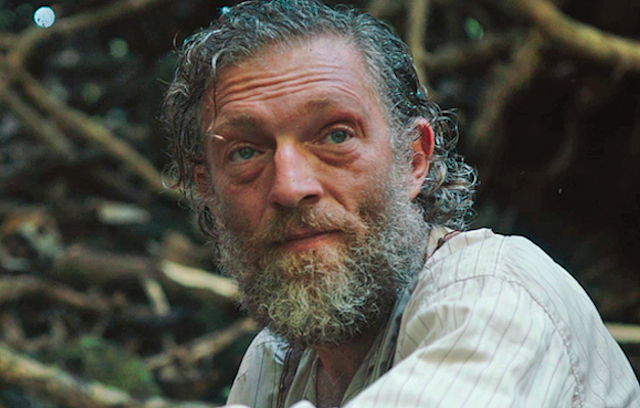CHICAGO– The art masters, and the masterpieces they have created, become a background culture in our lives… even if we don’t necessarily know the artist. Paul Gauguin is one of those painters-as-cultural-influencer, and a vital point in his artistic life is told in the film “Gauguin: Voyage to Tahiti.”
 Rating: 3.5/5.0 |
Vincent Cassel – best known to American audiences in “Ocean’s Twelve” (and “Thirteen”) – dives into the role of Paul Gauguin like a man possessed, and in many ways this was Gauguin’s most obsessive period. He left everything behind as a French painter to find his “artistic” self in Tahiti, and as many great masters do, paid the price. The story is fascinating and frustrating, much like the artist himself, but doesn’t project an understanding to the artist’s inner life or the Tahitian natives around him. This works as a lesson in being an artist over everything else, and in that circumstance something always have got to give… or in Gauguin’s case, give out.
Paul Gauguin (Vincent Cassel) has come to the end of his useful life as an artist in Paris, circa 1890. Despite the efforts of many around him, including his soon-to-be-ex wife Mette (Pernille Bergendorff) and friend/patron Schuffenecker (Samuel Jouy), he is bound and determined to find his artistic soul in Tahiti (a colony island of French Polynesia). In 1891, he leaves for that destination.
He is restless at first, until he travels to the collective of Matalea, taking with him a bride named Tehura (Tuheï Adams). This is when his most productive times begin, but he is also beset by bad health, poverty and an assistant named Jotépha (Pua-Taï Hikutini) who has an eye for Tehura. These factors fight against his artistic productivity, despite the support of Dr. Vallin (Malik Zidi). Gauguin’s paradise and vision begins to unravel.
 Continue reading for Patrick McDonald’s full review of “Gauguin: Voyage to Tahiti”
Continue reading for Patrick McDonald’s full review of “Gauguin: Voyage to Tahiti”
Vincent Cassel as the Artist in ‘Gauguin: Voyage to Tahiti’
Photo credit: Cohen Media Group
 Continue reading for Patrick McDonald’s full review of “Gauguin: Voyage to Tahiti”
Continue reading for Patrick McDonald’s full review of “Gauguin: Voyage to Tahiti”